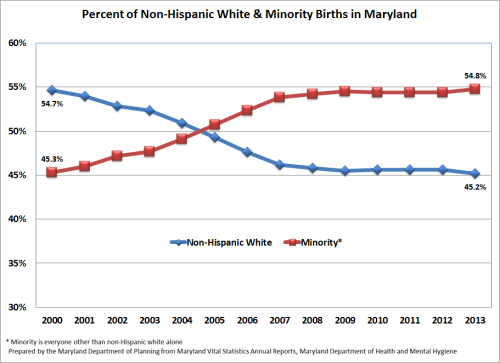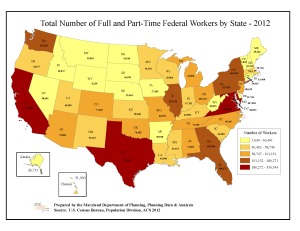Net Natural Decrease Approaching for Non-Hispanic Whites
Recent population estimates by age, race, gender and Hispanic origin for Maryland from the U.S. Census Bureau revealed that all of Maryland’s population growth in 2014, and indeed since 2010, was the result of the growth in minority populations, where minority is everyone other than non-Hispanic white alone. Growth in Maryland was led by Hispanics, followed by African Americans, Asians and those of two or more races. There was a decline in non-Hispanic whites due to net domestic outmigration. (See Hispanics Continue to Lead Maryland’s Population Gain in 2014).





